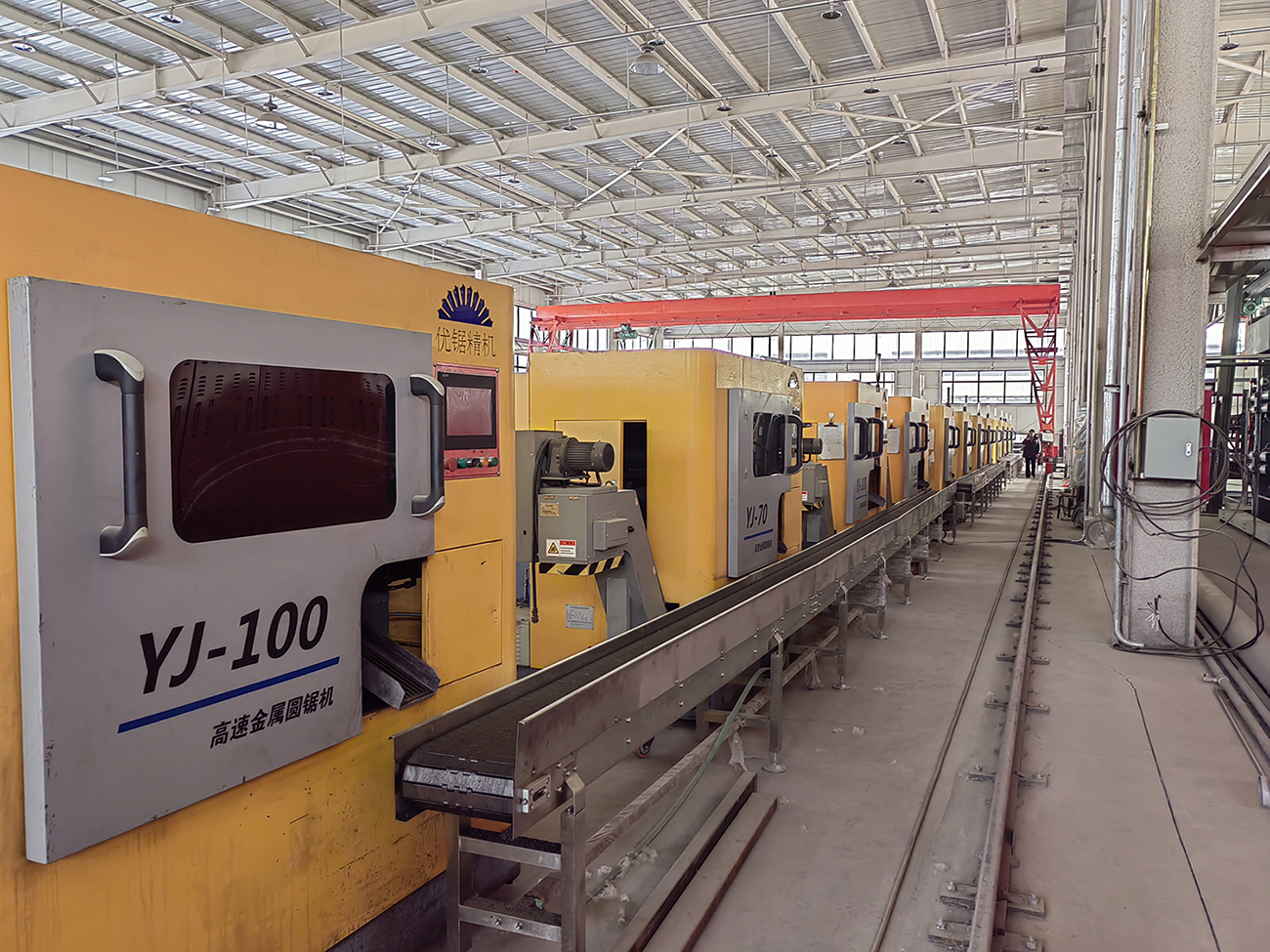English




This mechanism is employed when the rhythm of the subsequent process after sawing exceeds the cutting rhythm of a single circular saw machine. By connecting multiple circular saw machines, the finished cut materials are transported collectively via conveyor belts into the next process. When the next process becomes full and cannot handle the materials in time, the circular saw machines can automatically pause production. Once the next process is ready to accept more materials, the saw machines transition from a paused state to an operational cutting state. This mechanism boasts high automation, stable and reliable operation, significantly reducing labor costs, enhancing production efficiency, and decreasing equipment investment costs.

